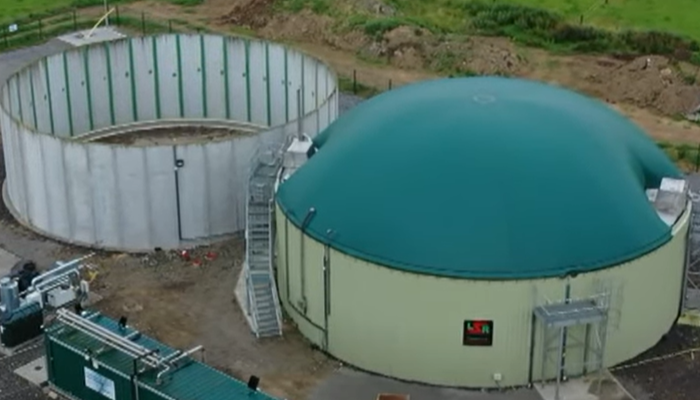03 November 2022
Developing an Irish Biomethane Industry

Biomethane is a carbon neutral renewable gas made from farm & food waste. The process is known as anaerobic digestion. Gas Networks Ireland has launched a Request for Information to identify new & feasible biomethane production projects. Teagasc Energy Specialist Barry Caslin gives information
Background
The Irish Government has allocated €3m in state investment in budget 2023 to help reach a target of 150 – 200 operational anaerobic digestion plants by 2030. The ambitious target will see farm based biomethane being ramped up between now and 2030. Gas Networks Ireland want to replace natural gas which is a fossil fuel with a carbon-neutral renewable gas – biomethane – made from farm and food waste. Biomethane can seamlessly replace natural gas on the network today and is fully compatible with existing appliances, technologies and vehicles.
Target for biomethane production
The 2021 Climate Action Plan set a target of 1.6TWh of biomethane by 2030. This would require roughly 80 farm-scale AD plants – 20GWh in gas output and approximately 30,000t of slurry and biomass. In July Minister Ryan increased the target to 5.7 TWh by 2030, up 256%. This would satisfy about 10% of our current natural gas demand. The minister says this would require 150-200 plants, likely larger than the accepted farm-scale plant. On average an AD plant has a lead-in time of three to four years, from idea to commissioning. No other country has managed to develop an AD industry in the absence of government support and Ireland will be no different.
GNI Request for Information
Gas Networks Ireland (GNI)has launched a Request for Information process to support the identification of new and feasible biomethane production projects. Responses will be used to:
- assess the future infrastructure requirements for biomethane integration into the gas network and
- facilitate the most efficient delivery of biomethane to customers and the most economic connections to the gas network for producers.
As part of the process, Gas Networks Ireland is holding an information event with other stakeholders and biomethane producers on 29th November 2022, at the Clayton Hotel, Ballsbridge, Dublin 4.
Biomethane producers that intend to supply renewable gas into the Irish gas network are invited to respond by the closing date of Monday, December 19th.
Responses may be submitted online or download the form here and email to biomethaneRFI@gasnetworks.ie . Alternatively they can be posted to Gas Networks Ireland, Gasworks Road, Cork, T12 RX96. Please mark all email and postal correspondence with the title ‘Biomethane RFI’. To find out more about the RFI process and submit your response, please visit the Gas Networks Ireland website
Feeding a Biomethane Plant
A 20 gigawatt hour (GWh) biomethane plant would require about 37,000t of feedstock. About 60% of that would be crops and 40% would be animal slurry. Around 400ha to 500ha of land would be required to grow that crop. A 20GWh plant would require 4% of the feedstock from the land in a 10km radius around it.
An estimated land area of 120,000ha will be needed to produce grass silage to feed the digesters this is circa 3% of the total agricultural area. In addition winter slurry from 1,300,000 cattle will be required which represents 20% of all winter cattle slurry produced in Ireland.
Digestate
What goes into a digester must come out. Biodigestate is a natural fertiliser for grass and crops. It can replace artificial fertiliser in crop production. The crops grown can feed both livestock and the network of AD plants around the country. There is a lot of under-utilised land and two thirds of beef farmers are deemed non-viable or in a sustainable category on income mainly due to an off-farm income source.
Anaerobic Digestion at Teagasc Grange
The Teagasc Grange plant will produce nominally 70m3/ of biogas per hour. Most commercial AD biogas plants require an output of 200m3 of biogas per hour (10GWh) to be economically viable to use a biomethane upgrader. Most European biomethane plants are larger than 200m3 per hour. The Grange plant is expected to be in operation for 8,000 hours per year with an estimated biogas output of 560,000m3 per annum.
Read more about the Anaerobic Digestion Plant at Teagasc Grange here
